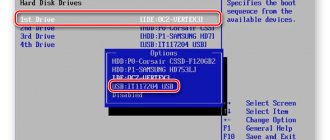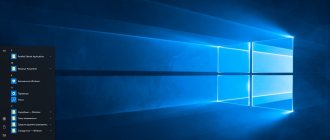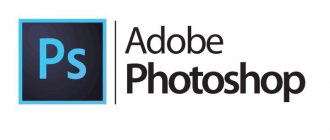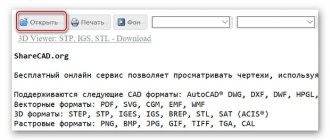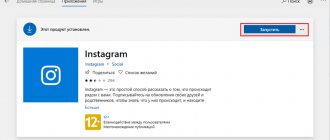Over the past few years, Microsoft has been working on lightweight versions of its operating systems. We all remember the miserably failed Windows RT, which was either unfinished or misunderstood. The bottom line is that the devices on it were not successful. Later, the corporation presented the world with a new creation - Windows 8.1 with Bing. This version of Windows 8 was made available to manufacturers completely free of charge. The edition was released to give manufacturers the opportunity to produce even cheaper devices (for example, tablets for $100 and laptops for $200). Moreover, all the money from the sale of such devices goes to the manufacturer, and Microsoft does not receive a cent. The idea was great and was very well received, especially by the manufacturers. But here the factor of the unpopularity of Windows 8 itself had its influence.
The company still did not give up hope of returning to this issue. Lately there has been a lot of talk, rumors and speculation about the new edition of Windows 10 - Windows 10 Cloud. Immediately she was the center of attention. Some predicted it would have the same fate as Windows RT, others were simply skeptical that it was a lightweight version, which means it would be a stripped-down version of Windows 10. Today I will try to tell you a little more about it, explain why Microsoft needs Windows 10 Cloud and why so important to them.
Zero PC (https://zeropc.com/)
One of the most functional cloud operating systems on the Internet. The service works both in the browser and has ready-made applications for iPhone, iPad, Android and Amazon Appstore. In addition, the service supports authorization through social networks Facebook, Google +, Twitter.
After registering with Zero PC, the user receives a ready-made desktop with windows, shortcuts, folders and an “Apps” button, similar to the “Start” in Windows.
The interface is developed in HTML5 and Java without using Adobe Flash. When you press the right key, the traditional context menu is triggered, which performs all the main functions of the operating system - copy, paste, move, delete, archive. There is a built-in Thinkfree Office 4 text editor, Internet browser, audio and video player.
To store files, you can use Google Drive cloud storage or your own built-in storage. The free version provides 1 GB of free space, when upgrading to the Basic tariff ($2.99 per month) - 5 GB, and up to the Pro tariff ($9.99 per month) - as much as 50 GB.
One of the disadvantages is the lack of full localization into Russian.
CloudMe and CloudTop (https://cloudme.com)
CloudMe is the new name of the iCloud service, which was hosted on the iCloud domain until the spring of 2011, when Apple acquired the rights to this domain from the Swedish studio Xcerion for its own cloud service and device synchronization.
Now CloudMe and CloudTop are a powerful cloud operating system with a stylish design that runs on all popular devices - Windows, Mac OS, Linux, iPhone, iPad, Android, BlackBerry.
The service is also built in HTML5 and includes a desktop, shortcuts, widgets, control panels and a Start button. The system provides standard applications (mail, calendar, photo album) and additional ones (about 50), which are installed through the application manager. The only downside is the lack of a built-in text editor.
CloudMe provides several tariff plans to choose from:
1) Free (3 GB of free space); 2) 25 GB (4.90 € per month); 3) 100 GB (14.90 € per month); 4) 500 GB (49.90 € per month).
The interface is completely localized into Russian.
Windows 10 Cloud: what kind of beast is this?
The world first heard about Windows 10 Cloud after the release of Windows 10 Preview Build 15019 . In this build, a certain Brad Sams from the Petri resource found in the file “Pkeyconfig.xrm-ms” a mention of three previously unknown versions of Windows 10: Win10 RTM Cloud OEM, Win10 RTM Cloud Retail and Win10 RTM CloudN.
The first obviously implies that this system will be sold as pre-installed on computers. The “N” mark indicates that the version does not include some services and is intended for the EU and South Korea - such editions of Windows existed before. The most interesting thing is the mention of Win10 RTM Cloud Retail. The "Retail" label suggests that this version will somehow be sold at retail rather than coming pre-installed on computers.
This news has certainly sent the Internet into a tizzy. Experts began to talk about the new version of Windows 10 and ask questions to their sources at Microsoft. Thus, ZD.net journalist Mary Jo Foley, citing her knowledgeable sources, immediately clarified that the new product will be another simplified version of Windows, designed to run universal applications from the Windows Store. Everyone immediately began to say that the new OS would follow the path of Windows RT.
After some time, even a link to a test version of Windows 10 Cloud appeared on the network. So, the first screenshots of the new version of Windows 10 soon appeared on the Italian website WindowsBlogItalia.
They instantly spread all over the Internet. Now it was clear what the system was. It was immediately clarified that desktop programs that were converted into universal applications using the Project Centennial tool (Slack, Evernote, CrystalDiskMark, etc.) work fine in Windows 10 Cloud. At the same time, some standard programs (Notepad, Paint, Command Line) do not start.
Later, there were even craftsmen who managed to run 32-bit applications on Windows 10 Cloud, bypassing the blocking. The blog woafre.tk told everyone about this, where screenshots of some programs were posted.
Well, many were completely puzzled by the news that, it turns out, Windows 10 Cloud can be updated to the Pro version using the Store. The MSPU resource told about this. They even posted a video showing that when you try to run a desktop app on Windows 10 Cloud, you get a message saying it's not supported because the OS is designed to keep your PC protected by only installing apps from the Windows Store. But if the user still wants to install an unsupported app, they can follow the link in the message to learn how to do so.
The link leads to the Windows Store, where a page opens with an offer to upgrade the system to Windows 10 Pro. However, at the moment there is a warning on the page that you cannot buy this update for the version of the operating system you are using (namely, Windows 10 Cloud). But most likely, this is due to the fact that the project is still in the early stages of development.
This gave rise to new disputes, speculations and rumors. I would also like to share with you some of my thoughts on this matter.
Glide OS
Cloud operating system entirely built on Adobe Flash. The service does not have separate applications on smartphones, but has a separate mobile version in HTML with reduced functionality.
The resource offers three display modes: desktop (desktop), Glide HD and Internet portal. In desktop mode, 15 applications are available: text editor, photo editor, calendar, video and audio player, email client, various utilities.
Glide HD offers unified work with files - upload, delete, edit and distribute into folders. The service has the Glide One application, which allows you to synchronize files on your computer and in the cloud.
The service is suitable for those users who need a large amount of free space. The free edition provides 30 GB of disk space, and for $4.95 per month you can increase it to 250 GB.
AstraNOS (https://astronos.org)
AstraNOS is created in the likeness of the Mac OS operating system, which will undoubtedly appeal to fans of Apple products.
The service is written in the programming language HTML and JavaScript. The interface has a ribbon bar with application icons. And there are a large number of them: a browser, a text editor, an email client, an RSS reader, games, a calculator, a calendar, stickers and a photo viewer.
The disadvantages include the lack of cloud storage and interaction with a desktop computer or mobile device. The main advantage of AstraNOS is that it is free – the project is completely non-commercial.
Joli OS
The Joli OS operating system is available in two versions - desktop OS and web version. The development of the French startup began back in 2010, when Google began introducing its own operating system, Chrome OS.
Joli OS is based on the Linux kernel and can run even on outdated computers. The interface is built on modern HTML5 technologies, which ensures high speed. In addition to the desktop version, there is the Joli Cloud online service, which is necessary for synchronizing files between devices. In addition to regular registration, authorization can be done through the social network Facebook. Inside the cloud service, you can choose to automatically connect popular Internet services - Box, Dropbox, Google Drive, SkyDrive, Instagram, Vimeo, Youtube, SoundCloud, Flickr, etc.
The user can centrally view documents, photos, videos and music from authorized social services. However, this is where all the active actions end. Files cannot be edited or modified.
Windows 10 Cloud vs Chrome OS
Some experts associate the appearance of Windows 10 Cloud with Windows RT, but recent events and news about it have shown that such conclusions are groundless. Then why Microsoft's Windows 10 Cloud? What tasks does the company set for the new version of Windows 10?
I (as it turned out, not only me) was immediately inclined to think that the company needed Windows 10 Cloud to compete with Chrome OS. Many people probably thought I was crazy now. Where is Windows OS and where is Chrome OS? But not everything is so simple and unambiguous. Some of our experts judge by the domestic market, where it is very rare to find Chromebooks, or even not available for sale at all. But this is ours. In the US and Europe, Google is doing everything possible to conquer the market. This is understandable: although their Chromebooks are not competitors to the MacBook, Dell, Surface or other devices, they have their own buyer. They have made especially positive progress in the United States. There, Chromebooks came free to schools and are becoming increasingly popular among young people due to their price and ease of use. Some experts even claim that they are pushing tablets out of the market, and Chromebooks are increasingly appearing in the rankings of many sites.
Of course, Microsoft knows about this and understands that this way you can lose several points in the share of the OS in the world. This is where the new Windows 10 Cloud can come in handy, which can become a kind of alternative to Chrome OS, given that it can be free for manufacturers. I am sure that this can work, given that Chrome OS is not so popular among users yet. But times change, and with them preferences.
Silve OS (https://silveos.com)
All fans of Microsoft Windows OS will love the cloud-based Silve OS. The service is developed using Silverlight technology and requires the installation of additional browser plugins.
The system includes the most necessary applications: browser, explorer, media player, notepad, graphics editor, calculators, online Bing Maps and a small number of games.
The service contains many limitations - there is no context menu, you cannot drag files with a mouse click, there is no reverse saving of files from a personal computer to the cloud.
It is worth noting that the service has a mobile application for Windows Phone, which allows owners of devices based on this OS to use the cloud “desktop” Silve OS on a smartphone.
Surface Phone on Windows 10 Cloud
Someone will say that I am again talking about “this no one is interested in” Surface Phone. Well, this is of course your right. I find him very interesting. Satya Nadella has said more than once that this will be something unusual and very interesting. Even different concepts were put forward. Various rumors predicted certain design and filling properties for it. But everyone said that it would be on Windows 10 Mobile, which was no longer interesting to anyone. Plus, rumors have recently appeared that Redstone 3 will be the last update for Windows 10 Mobile and after it the company will stop releasing updates.
For some reason, at the same moment when I read this news, the idea was born in my head that the new Windows 10 Cloud would work on the mysterious Surface Phone. But this may be some new smartphone format. Microsoft recently registered a new patent that allows you to turn your smartphone into a tablet and vice versa. Maybe just such an unusual device will return Microsoft to the smartphone market or give birth to a new era of mobile devices? But this is just my observation and my reasoning.
And yet, as we see, the prospects for the new Windows 10 Cloud are quite good. The new OS will enable the company to continue to control the market for desktop PCs and laptops, as well as fight against competitors (Apple with their tablets and Google with Chromebooks). Well, the most fantastic thing is to triumphantly return to the mobile segment market and, perhaps, set a trend in it.
There is not long to wait; Windows 10 Cloud will be officially introduced to the world during the Windows 10 Creators Update in the spring. Well, we'll wait.




